Salvadoran Army
The Salvadoran Army (Spanish: Ejército Salvadoreño) is the land branch and largest of the Armed Forces of El Salvador. In 2006 the government of El Salvador approached the Israeli ambassador to El Salvador seeking assistance in modernising its army.[2]
| Salvadoran Army | |
|---|---|
| Ejército Salvadoreño | |
 Badge of the Salvadoran Army. | |
| Founded | 1824 |
| Country | El Salvador |
| Branch | Army |
| Size | 14,165[1] |
Conflicts
The Football War
The Football War (also called The Soccer War or 100-hours War) was a term coined by Polish reporter Ryszard Kapuściński to describe a brief conflict between El Salvador and neighbouring Honduras. He argued that the war began after the rival nations traded wins during the qualifying round for the 1970 FIFA World Cup. But this event was not the cause of the war. Tensions had been mounting between both nations for several years because of immigration and economic problems, resulting on the war in 1969. The soccer matches incidents just one of several events that happened during that time. Longstanding tensions between the countries were heightened by media reports on both sides, each accusing the other of hooliganism and violence toward their own football fans. On June 26, 1969, El Salvador dissolved all ties with Honduras, the events were used as a call for nationalist pride for both governments and the media.
On July 14 Salvadoran forces began moving rapidly into Honduras following a series of border clashes. Their progress halted after the Organization of American States (OAS) and the United States brought heavy diplomatic pressure to bear on both governments in an effort to effect a cease-fire.
A ceasefire was ultimately negotiated and signed by July 18, with Salvadoran forces withdrawing from Honduras by August 2 following guarantees of safety for Salvadoran citizens in Honduras by the Honduran government.
The Salvadoran Civil War
By the late 1970s, longstanding socio-economic inequality, human rights violations and the unwillingness of the National Conciliation Party dictatorship to address these problems led to the growth of a social movement. The government responded by assassinating thousands of political opponents and massacring students and protestors on several occasions. The heavy handed response of the government signaled to those identifying with the social movement that peaceful solutions were futile, which led to the growth of an insurgency.
On 15 October 1979, the military government was deposed by a joint military-civilian government calling itself the Revolutionary Government Junta of El Salvador or JRG. The JRG's policies were met with opposition from the military and economic elites and government repression increased, with tens of thousands of civilians being killed in 1980 and 1981 alone. This led to the formation of the FMLN, which brought on a twelve-year civil war.
The Iraq War

Up to 380 Salvadoran troops, mostly paratroopers, were deployed as part of the Coalition Forces in Iraq between August 2003 and January 2009. They operated alongside the elite Spanish Legion in Najaf. While in Iraq, the Salvadoran contingent suffered 5 dead, and 20 wounded.[3]
Organizational structure
.jpg)
El Salvador is divided into 6 military zones, each of which has its own infantry brigade:
- 1st brigade (San Salvador)
- 2nd brigade (Santa Ana)
- 3rd brigade (San Miguel)
- 4th brigade (Chalatenango)
- 5th brigade (San Vicente)
- 6th brigade (Usulután)
Furthermore, the army has the following units:
- 1 Special Military Security Brigade consisting of 2 Military Police and 2 border security battalions,
- 8 infantry detachments with 2 battalions,
- 1 Engineer Command with of 2 battalions,
- 1 artillery brigade with of 2 field artillery and 2 anti-aircraft battalions,
- 1 mechanized cavalry regiment with 2 battalions, and the
- Special Forces Command with 1 Special Operations Group, and 1 Anti-Terrorism Command.
- 1 female soldiers battalion on the artillery brigade.
Equipment
Infantry Weapons
| Name | Type | Quantity | Origin | Notes |
|---|---|---|---|---|
| P227 | Handgun | All its variants. Used By soldiers and special forces. | ||
| P226 | Handgun | All its variants including the Sig Sauer X Six SIG P226 X Six. Used By soldiers and special forces. | ||
| M9[4] | Handgun | |||
| CZ 75[4] | Handgun | |||
| 92SB[4] | Handgun | |||
| FN P35[4] | Handgun | |||
| IWI 941[4] | Handgun | |||
| G17[4] | Handgun | Salvadoran Army's Special Forces and Anti-terrorist Command. Variants that are used: Glock 17, Glock 17C, Glock 17L, Glock 17MB, Glock 17M. | ||
| Uzi[4] | Sub-machine gun | Uzi submachine gun, Mini-Uzi. | ||
| Ingram MAC-10[4] | Sub-machine gun | |||
| MP5[4] | Sub-machine gun | MP5SD3, MP5A3, MP5A2, MP5, MP5A1 | ||
| HK33[4] | Assault rifle | Including HK53 variant | ||
| HK416[4] | Assault rifle | |||
| FN FNC | Assault rifle | versions used: Standard" Model 2000 and Short" Model 7000, used by the Salvadoran Military Police and Paratrooper Battalion | ||
| M4 | Assault rifle | M4 Carbine, Colt M4A1, Colt M4 (original 1993 version), M4 (Colt Model 933), Colt M4 (M162 sights, burst and full auto) | ||
| T65[4] | Assault rifle | |||
| M16[4] | Assault rifle | XM16E1, M16A1, M16A2, M16A3, M16A4, M16A1 with A2 handguards. M16A2 (Model 701, 703, 705 (Burst fire/single fire)), Model 711, Model 715 and Model 720 (Burst fire/single fire)). M16A2 Light Machine Gun (LMG). Some M16A1's have M16A2's brass defectors, XM16E1. M16A2 (Model 645), some M16A1's (also with the A2 handguards) have the M16A2 hand-grip. M16A1 with A2 handgrip A2 brass defectors. Also M16A1 with M16A2 handguards have M16A2 brass defectors and M16A1 handgrip, M16A1 (enhanced). | ||
| IMI Galil[4] | Assault rifle | Galil AR, Galil SAR, Galil SAR339, Micro Galil, Galil ARM. | ||
| Galil ACE | Assault rifle | ACE 21, ACE 22, ACE 23 (5.56×45mm NATO), ACE 32 (7.62×39mm), ACE 52, ACE 53 (7.62×51mm NATO). | ||
| M14[4] | Battle rifle | Used as ceremonial gun, still used in active service on the Salvadoran Army infantry divisions, | ||
| Heckler & Koch G3[4] | Battle rifle | G3A3, G3A4, G3KA4 | ||
| M24 | Sniper rifle | |||
| M21 | Sniper rifle | Used in the Salvadoran Army Special Forces. | ||
| Barrett M82 | Sniper rifle | Used in the Salvadoran Army Special Forces. | ||
| Dragunov SVD | Sniper rifle | Used in the Salvadoran Army Special Forces. | ||
| M79[4] | Grenade launcher | |||
| M203[5] | Grenade launcher | mounted in M16 Rifles (all its variants), M4's, M4A1's and CAR-15's (all its variants). | ||
| M60[4] | General purpose machine gun | M60, M60E2, M60B, M60C M60D. During the civil war some M60's were chopped from the front sights to give a CBQ capabilities. | ||
| M2HB[4] | Heavy machine gun | |||
| HK21[4] | General purpose machine gun | |||
| FN MAG[4] | General purpose machine gun | |||
| M249[4] | light machine gun | First-generation M249 SAW, M249 Paratrooper. | ||
| FN Minimi[4] | light machine gun | Minimi Para, FN Minimi. | ||
| CAR-15 [4] | Carbine | Colt Model 933, XM177, GAU-5/A (Colt Model 610), XM177E1 (Colt Model 609), XM177E2 (Colt Model 629), Colt Model 653 (M16A1 Carbine), Colt Model 654 (M16A1 Carbine), Colt Model 654 (M16A1 Carbine), Colt Model 727 (M16A2 carbine), Colt Model 733 (M16A2 Commando), Colt Model 723 "M16A2 Carbine". M16A2 SMG Model 635, XM177-E2 (Colt Model 629), Model 933, Colt Model 629, Colt 9mm SMG DOE (Model 633, US Car 15 Carbine (Colt Model 607), US XM177E1 (Colt Model 619), US XM177E2 GAU-5/A/B (Colt Model 639)). | ||
| Colt Canada C7 rifle | Assault rifle | Colt Model 715. Imported from Canada in the 2000s. | ||
| MPi-KM | Assault rifle | Used since 1992 by the special forces. | ||
| AK-47 | Assault rifle | Used since 1992 by the special forces. | ||
| AKM | Assault rifle | Used since 1992 by the special forces. | ||
| Pistol Mitralieră model 1963/1965 | Assault rifle | Recovered from Gang members. | ||
| Diemaco C7A1 LSW | Light Machine Gun | Colt Model 715. Imported from Canada in the 2000s. | ||
| AK-63 | Assault rifle | Used Since 1992. | ||
| Steyr AUG | Assault rifle | Used Since the 1990s by the Salvadoran Army Special Forces. |
- RPG-7
- M40 recoilless rifle
- M67 recoilless rifle – 379[1]
- M72A2 LAW – 792[1]
- C90-CR (M3)<https://en.wikipedia.org/wiki/C90-CR_(M3)#Users/>
- M18 smoke grenade
- M67 grenade
The Salvadoran Army/Navy/Marines/Air Force use the same kind of small arm types. Also it uses, telescopic sights, Aimpoint T2 Micro, Ohuhu OH-RG-SC Reflex Sights (panoramic sights), EOTech EXPS 3-0 sights, Barska Holographic Reflex Red Dot Sight, Ozark Rihno Tactical Sights, Trijicon MRO-C sights, EOTech 512..A65 sights, Vortex Optics StrikeFire II sights, Burrist Fast BFire3, Tasco Red Dot Sights, CVLIFE Optics Hunting Rifle Scope 2.5x40e red and green illuminated crosshair mount sights in every kind of assault rifle and rifle the every military branch of the Salvadoran armed forces usage.
Vehicles
Note: Sources are circa 1988, while some equipment listed may no longer be in service.
| Armoured Fighting Vehicles | ||||||
| Model | Image | Type | Number | Origin | Notes | |
| AML 90[6] | 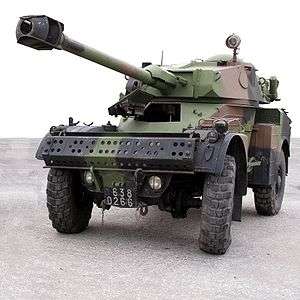 | Armoured Car | 6 [1][7] | |||
| UR-416[6] | Wheeled APC | 6[1] | ||||
| M3 Scout Car[6] | 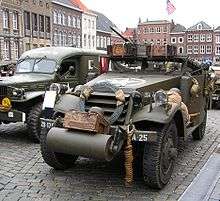 | Wheeled APC | 5 | |||
| Cashuat | APC | 41 | Based on a Dodge M37. Armour kits and turrets purchased from the United States and applied in El Salvador[8] | |||
| VCTA2 | Tank Hunter, created by the Salvadoran Military Forces | 38 | ||||
| BC7A1 | APC | 4 | Armed with two HS 404 20mm cannons. Also used as Anti-Air vehicle, created by the Salvadorian Military | |||
| M113[6] | _en.jpg) | APC | 20 | |||
| CJ-8 (Scrambler) [6] | 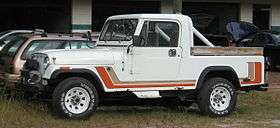 | Armoured Car | unknown | |||
| M3A1[6] | Half-track | 5 | ||||
| HMMWV | 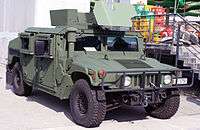 | Light Armoured Car | 50[7] | |||
| Utility Vehicles | ||||||
| Model | Image | Type | Number | Origin | Notes | |
| F-Series[9] | 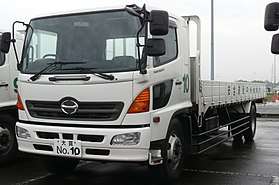 | medium-duty commercial vehicle | unknown | Part of a fleet of 45 new vehicles. | ||
| D22[9] | _ST_4-door_utility_(2017-09-22)_01.jpg) | pick up | unknown | Part of a fleet of 45 new vehicles. | ||
| AIL Storm[10] | 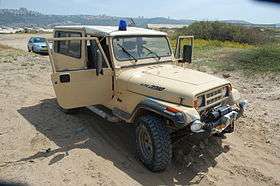 | Light Utility Vehicle | 38[1] | |||
| 2011 Ford Ranger | Light Utility Vehicle | 37[11] | ||||
| Jeep CJ[10] | 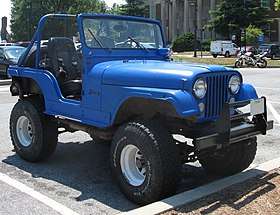 | Light Utility Vehicle | ||||
| M151[10] | Light Utility Vehicle | |||||
| Dodge M37[10] |  | Light Utility Vehicle | Mostly converted to Cashuats.[10][8] | |||
| M35 truck[10] |  | Medium cargo truck | 45 | |||
| M809 truck[10] | Heavy cargo truck | |||||
| MAN 630 truck[10] | Heavy cargo truck | |||||
Artillery
| Mortars | ||||||
| Model | Image | Caliber | Number | Dates | Origin | Notes |
| M19[1] | 60mm | 306 | ||||
| M29[12] |  | 81mm | 151[1] | |||
| M74[12] | 120mm | Kept in storage. | ||||
| UB M-52[12] | 120mm | Kept in storage. | ||||
| Field Artillery | ||||||
| Model | Image | Caliber | Number | Dates | Origin | Notes |
| M101[12] | 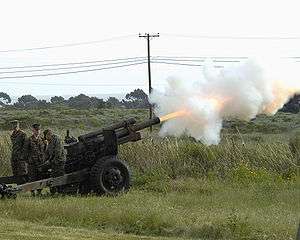 | 105mm | 8[1] | |||
| M102[12] |  | 105mm | 24[1] | |||
| M56[12] |  | 105mm | 18[1] | M101 copy produced in Yugoslavia | ||
| 105/14 Model 56[13] | 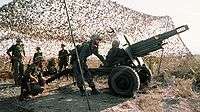 | 105mm | 14 | Pack Howitzer | ||
| M114[12] | 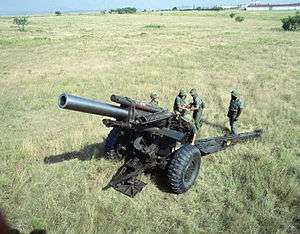 | 155mm | 6 | |||
| Anti-Aircraft Artillery | ||||||
| Model | Image | Caliber | Number | Dates | Origin | Notes |
| Zastava M55[12] | 20mm | 31[1] | Hispano-Suiza HS.804 copy. | |||
| M55 (Self-propelled)[12] | 20mm | 4 | Truck or half-track mounted M-55. | |||
| TCM-20[12] | 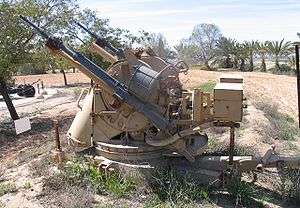 | 20mm | 4[1] | Twin Hispano-Suiza HS.404s on towed pedestal mount. | ||
Notes
- "El Salvador". Military Technology World Defence Almanac. Bonn : Wehr & Wissen: 60. 2005. ISSN 0722-3226.
- Itamar Eichner (March 20, 2006). "El Salvador seeks to copy IDF model". ynetnews.com.
- "El Salvador withdraws last soldiers from Iraq". USA Today. February 7, 2009.
- "Latin American Light Weapons National Inventories". Fas.org. Retrieved August 26, 2014.
- World Armies 2008. Jane's Information Group.
- "country-data.com > El Salvador > Appendix". Country-data.com.
- "Más dinero para el Ejercito salvadoreño". January 22, 2015. Archived from the original on January 22, 2015. Retrieved March 23, 2019.
- "Jane's VAL Light Assault Vehicle Cashuat". Jane's Information Group.
- "23NOV2018 MDN ENTREGO VEHICULOS A FT". YouTube. November 23, 2018. Retrieved March 23, 2019.
- "Jane's Military Vehicles and Logistics – El Salvador". Jane's Information Group.
- "2012 News - Embassy of the United States San Salvador, El Salvador". January 22, 2015. Archived from the original on January 22, 2015. Retrieved March 23, 2019.
- "ArmyRecognition.com > Index of El Salvador Military Equipment". Armyrecognition.com.
- "105/14 Model 56 105 mm Pack Howitzer". Forecast International. Archived from the original on December 11, 2008. Retrieved July 27, 2009.
Bibliography
- "El Salvador". Military Technology World Defence Almanac. Bonn : Wehr & Wissen: 60. 2005. ISSN 0722-3226.
External links
- defenselink.mil
- nationsencyclopedia.com
- EL SALVADOR: STANDING TALL
- (Salvadorian Armed Forces Research & Development Center)
- › Land › Machine Gun Armored Patrol Carriers in Central America(Machine Gun Armored Patrol Carriers in Central America)
- Anti-Tank Weapons in Mexico & the Northern Central American Triangle)
- Support and Anti-tank Weapons in Latin America: 90mm and 105mm Recoilless Rifles)